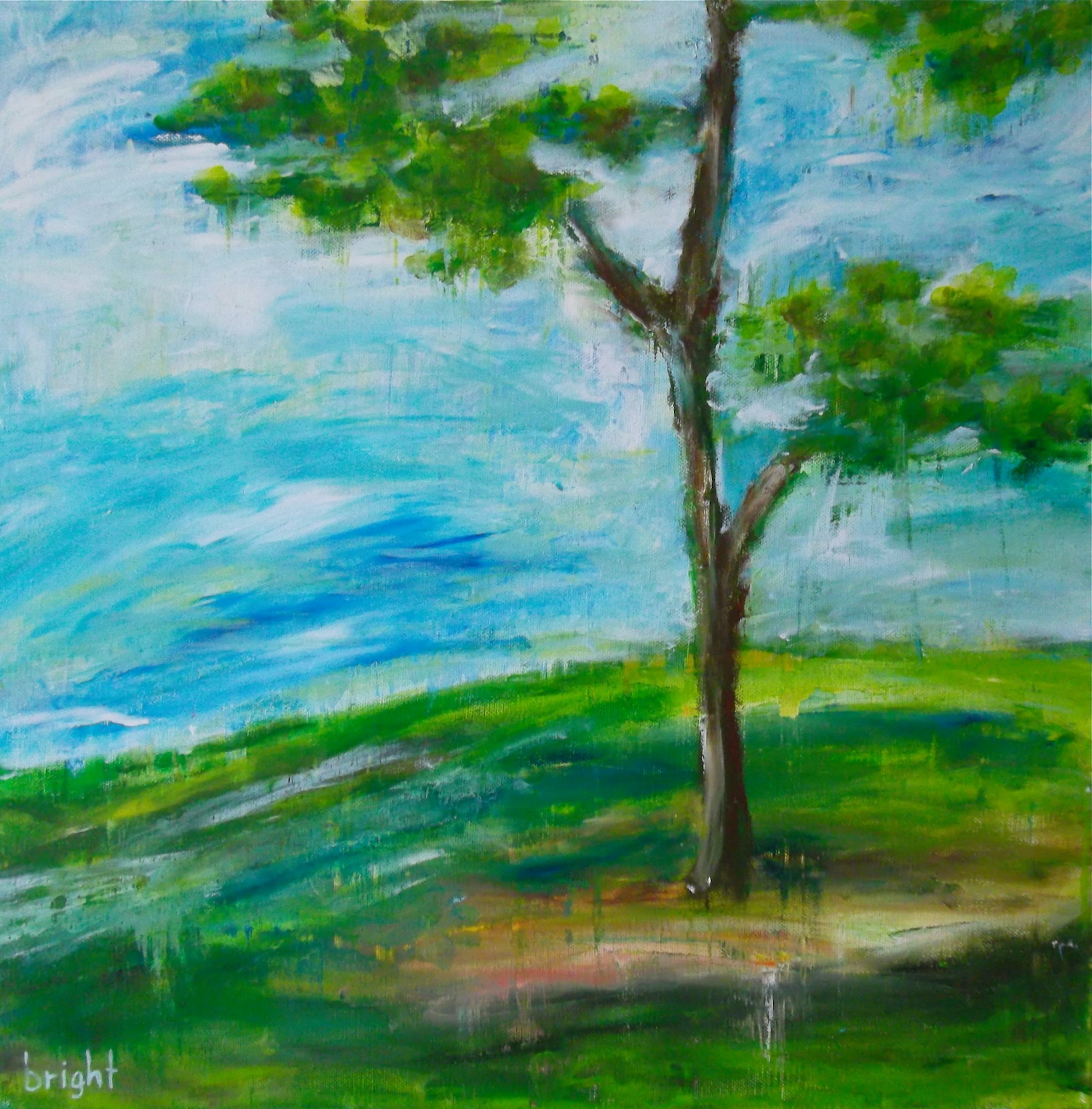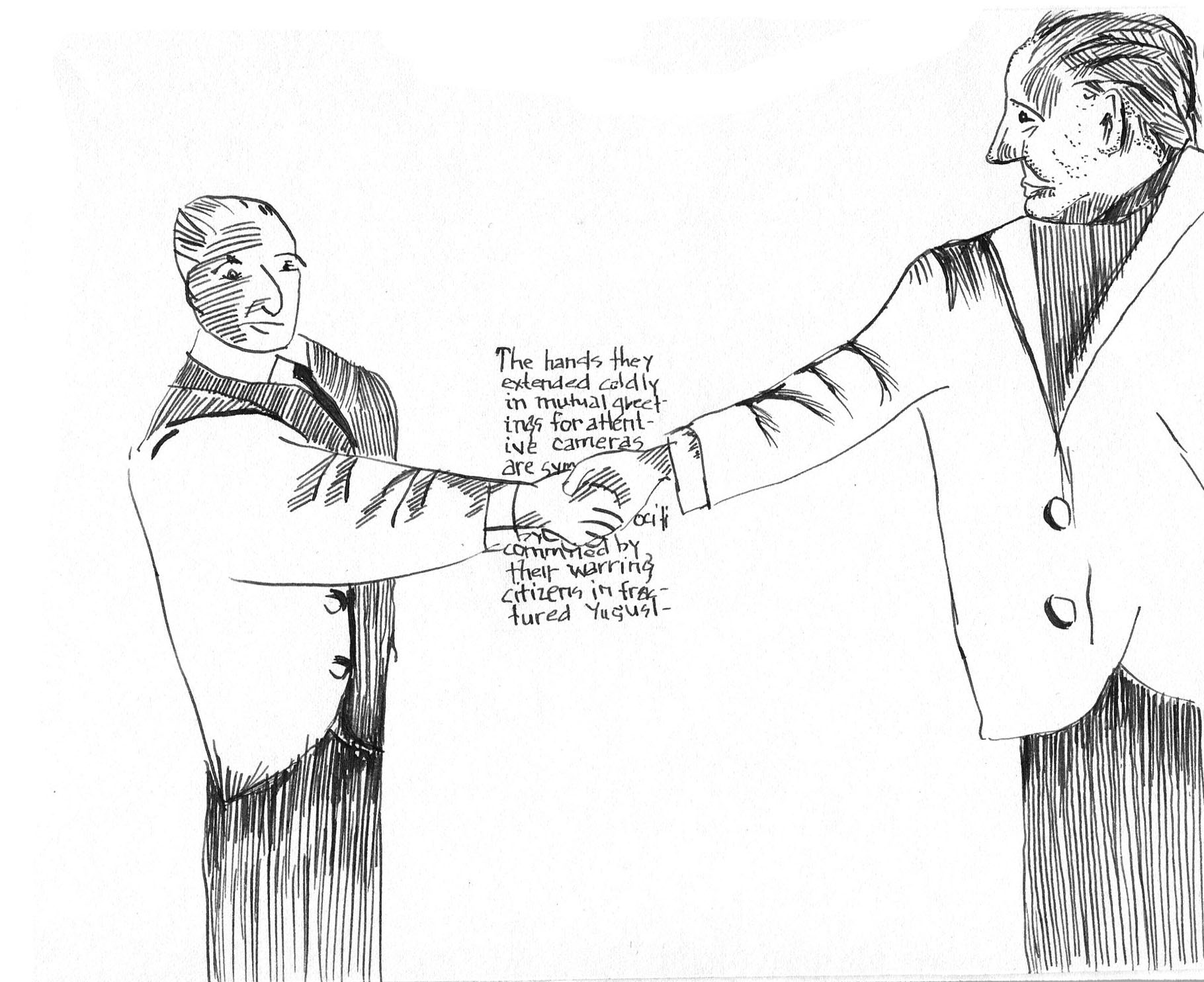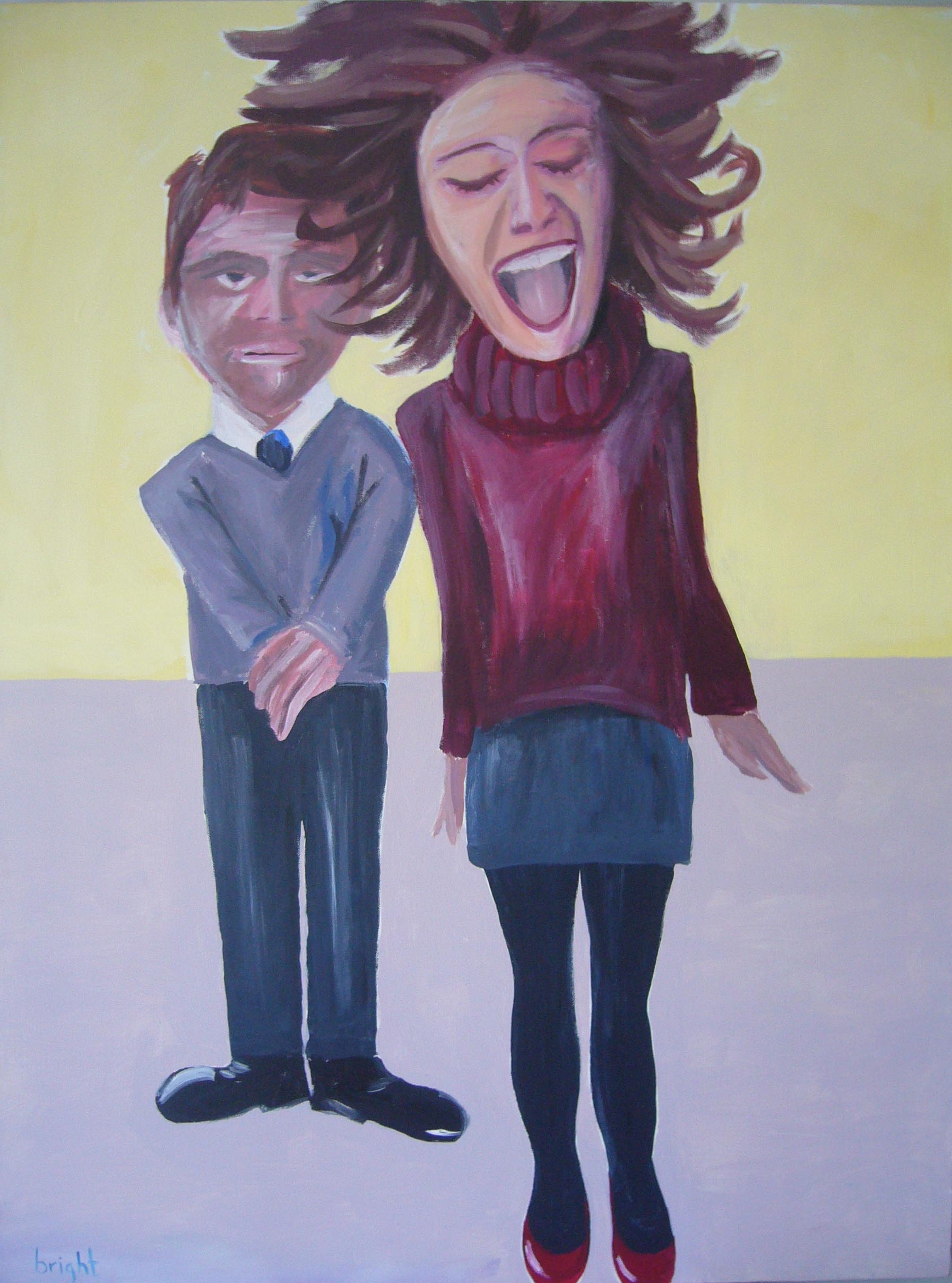Have you seen Season 3 of House of Cards? (don’t worry- no big spoilers here).
On Episode 6, as Claire and Francis race through the chaos of their Washington lives, the White House hosts, in its public space, the activity of 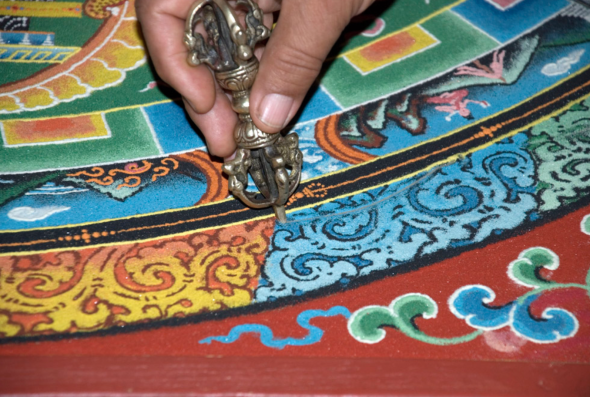 four buddhist monks. Over the course of the show, the monks create an extraordinary piece of art called a mandala.
four buddhist monks. Over the course of the show, the monks create an extraordinary piece of art called a mandala.
Traditionally, a mandala (a sacred geometric figure representing the Universe in Hindu and Buddhist symbolism) is painstakingly created over the course of days or weeks by applying millions of grains of coloured sand onto a flat surface. The process is intricate, repetitive and slow; their techniques have remained largely unchanged for thousands of years
Integral to the creation of the sand mandala, is its ceremonial destruction. The destruction begins when the last of the sand has been applied and the complex details, lines and symbols are removed. The sand is returned to nature into the moving water of a river or stream, the entire process of creation and destruction symbolizing the ephemerality of life and the world.
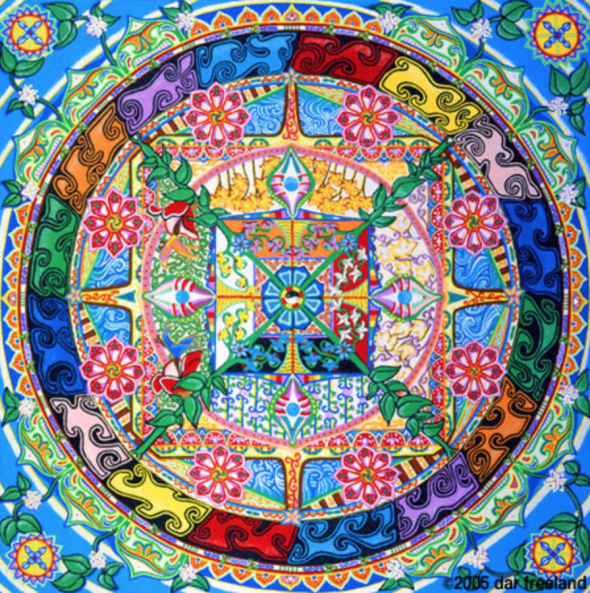 As I watched the creation of this unspeakably beautiful work I could feel the tension(!) inherent in the precise and delicate nature of every move the monks made; each grain of sand susceptible to the slightest movement, breath, wind or touch. And yet the monks worked on, seemingly unfazed.
As I watched the creation of this unspeakably beautiful work I could feel the tension(!) inherent in the precise and delicate nature of every move the monks made; each grain of sand susceptible to the slightest movement, breath, wind or touch. And yet the monks worked on, seemingly unfazed.
They were creating not for the sake of what would become a ‘final product’, but for the sake of the journey. Their toil was meditative, contemplative, symbolic and sacred; their work precious in its refinement, not its longevity.
Similar ideals of meditation and contemplation are popular and powerful in today’s west(ern world); we like to see them played out on television yet have difficulty with the idea of the ‘impermanence-of-everything’. Instead, we seek personal legacy and self aggrandizing longevity through the creation of products and brands that are all about us. We aspire to build ‘things’ that will outlive us and stand-in for our physical selves once we are no longer here.
What are the consequences of this race for legacy? Have we lost the capacity to appreciate or seek completeness and self-unity through meditative toil (as we see with the monks and their sand mandala), where there is no ‘final product’ built to last (longer than) a lifetime?
What mental strength does one need to create and destroy without legacy?
In the *western world of art (as contrast to the art world of the sand mandala monks) does any artist work simply for the act of creation?
(*The western world of art -so precious with fragility and the need for permanence in our work; an industry that insists only acid free, long lasting, colour-fast products will do; where social standard dictates that those who are ‘serious’ about their work will consider its longevity above all).
Is any one of us capable of creating and destroying without legacy? without record, without photo, (without blog entry), without comment-
What strength (or motivation) would we need- ?
